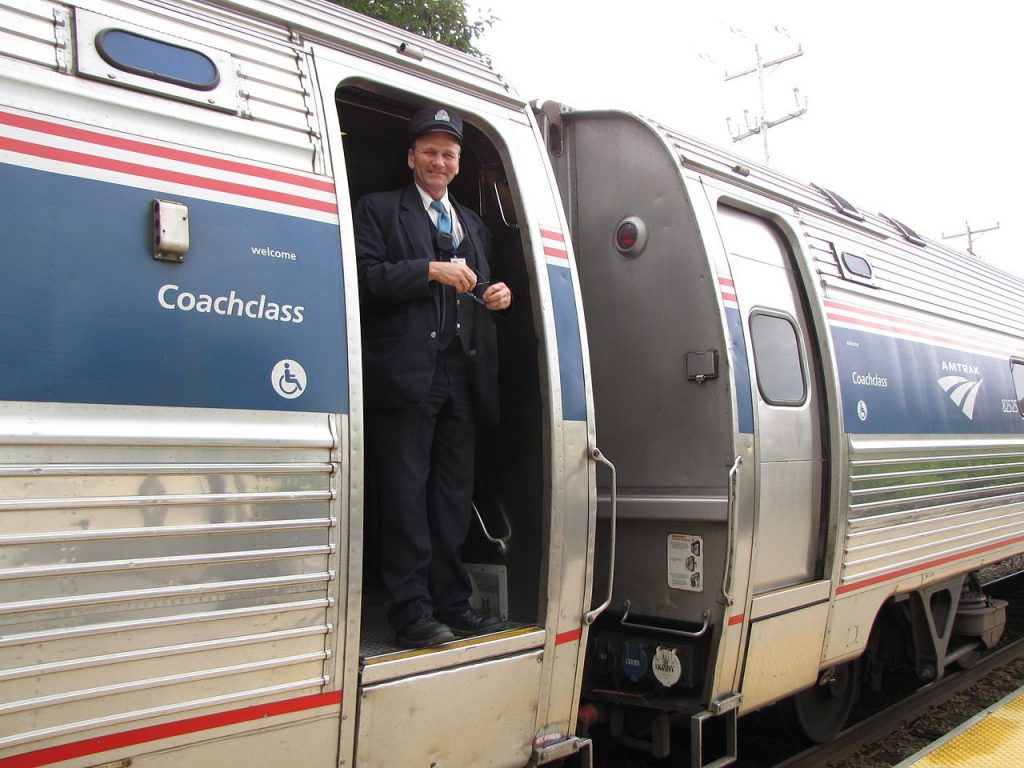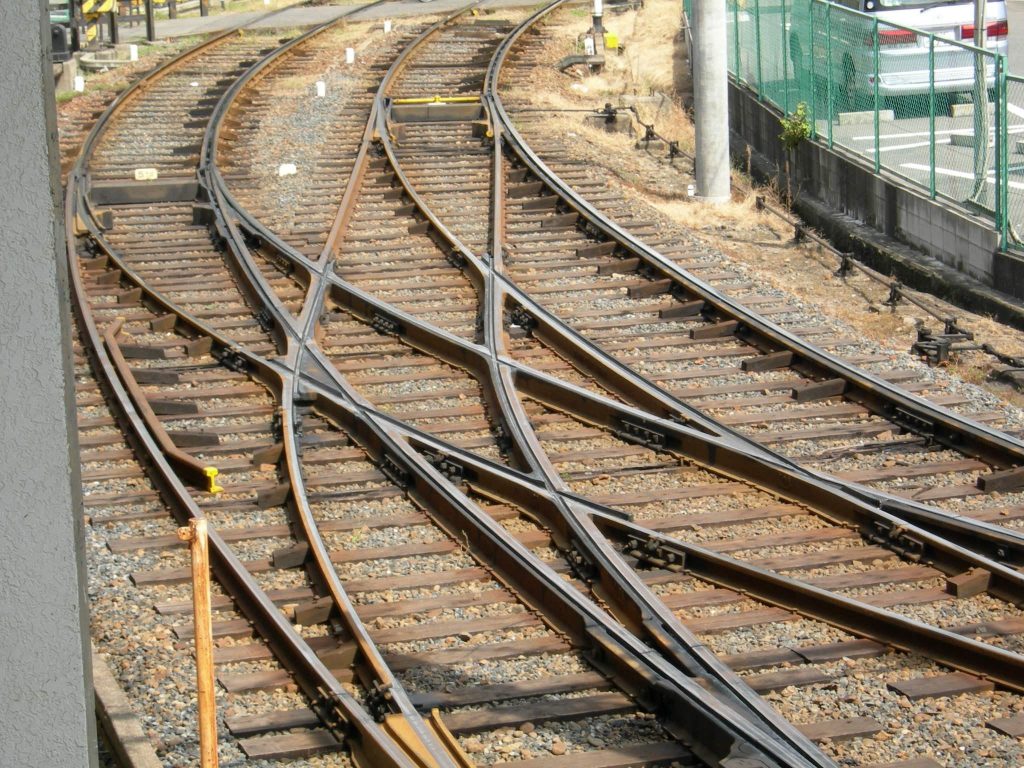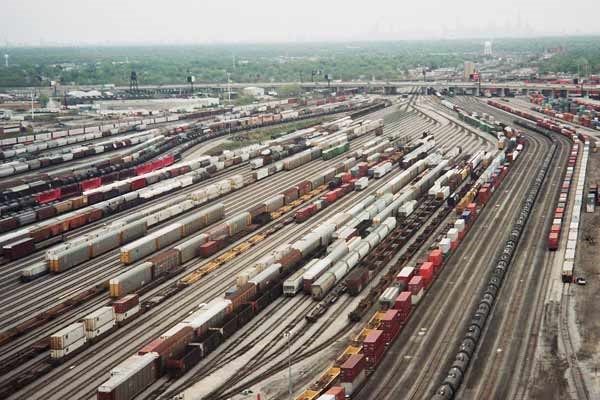InTrans / Dec 19, 2017
Transportation & me: A railroad worker
Go! Magazine
 posted on December 19, 2017
posted on December 19, 2017
Choo choo…all aboard the career train!
This time for our Transportation & me featured career, we’re talking about railroads. Although people don’t travel by train as much as they used to, there’s still plenty of them traveling across the country today—and plenty of opportunities to ride them as a railroad worker.
A railroad worker’s job is to ensure that passengers—as well as freight—get from Point A to Point B safely and on time. There is a mixture of careers involving railroad work, ranging from engineers to brake operators. As a railroad worker, you might manage the signals and switches from the rail yard or maybe you are the one driving the train!
Duties & careers
Here are the primary jobs that fall under the category of “railroad worker.”
Conductors—Conductors are needed on both passenger and freight trains because they coordinate the activities of the train crew. They’re responsible for ensuring passenger safety and comfort on passenger trains and for loading and unloading cargo on freight trains. Conductors also perform other general duties like checking tickets, taking ticket payments, and announcing stops and upcoming stations.

Locomotive engineers—Also known as railroad engineer, train driver, or train operator, locomotive engineers drive the train between stations and monitor the speed, air pressure, battery use, and other mechanics of the engine to ensure it’s running smoothly. Locomotive engineers observe the tracks for fallen tree branches or other obstructions and communicate with dispatchers to stay informed about delays or schedule changes.

Railroad brake, signal, or switch operators—These workers control the train’s equipment. Brake operators help link and unlink train cars, sometimes traveling with the train as part of the crew. Signal operators install signals along the tracks and in the rail yard and maintain them. Switch operators control the switches in the rail yards that switch the tracks, allowing trains to move between tracks while ensuring they are heading in the right direction.

Rail yard engineers—The rail yard engineer operates train engines within the rail yard. They move the locomotives between tracks to keep them organized and running on time. Rail yard engineers may also drive locomotives to and from destinations for maintenance work or prepare them for the locomotive engineer.

Yardmasters—Yardmasters have similar duties to conductors (i.e., overseeing and managing operations); however, they don’t travel aboard the train like a conductor does. Yardmasters oversee and coordinate the activity of workers in the rail yard. They direct yard engineers and ensure that trains are prepared before departure. Rail yards don’t always have yardmasters, but when they do, yardmasters are responsible for reviewing the schedules, arranging replacement of defective train cars, switching train traffic, and rearranging train cars according to the schedule.
Qualifications & skills
Railroad workers generally need a high school diploma or equivalent to work at the rail yard or on the train and typically receive several months of on-the-job training. Although you need less education than some of the other Transportation & me featured careers, you need a wide set of skills ranging from personal to leadership, and, of course, you need physical strength to lift heavy equipment and cargo.
Railroad workers also need good communication and customer service skills. In fact, all rail employees need good communication skills to communicate with passengers and other crew members effectively. Rail employees need good customer service skills to ensure passengers are safe and comfortable—this is especially true of the conductor.
Good leadership skills are especially important of a conductor or yardmaster, someone who is in charge of overseeing and managing other workers. These qualities help to maintain order and control while on the job.
Locomotive engineers need good hand-eye coordination to operate the controls while maintaining awareness of their surroundings as well as good vision (including peripheral and color vision) to drive the train. Most rail workers need to pass hearing and visual tests conducted by the rail company to qualify.
Outlook
Unfortunately for the railroad industry—a gleaming reminder of the Golden Age that once changed the United States forever—there’s a decreasing demand for transporting bulk commodities like coal and oil by railroad.
As more pipelines are opened to transport oil and natural gas (and since more power plants are using natural gas instead of coal), the need for railroad transportation may decrease and would subsequently lead to a decline in overall jobs as railroads reduce their employment in an effort to adapt.
That said, the increase in the shipment of goods through multiple transportation modes, or “intermodal freight,” may increase the demand for some types of railroad worker positions.
Transportation & you
If you are still interested in becoming a railroad worker, find out more about outlook and pay in the links below.
And if not, and you choose a career path that’s entirely different—perhaps something in the future of rail transport instead—that’s okay, too. But maybe next time you hear a train huffing past in the distance, you’ll think of all the people working together to make that possible. You’ll think of the conductor greeting passengers, the locomotive engineer driving the train from station to station, and of the yardmaster waiting for the train at the other end of the tracks.
References
www.bls.gov/ooh/transportation-and-material-moving/railroad-occupations.htm
www.bls.gov/ooh/transportation-and-material-moving/railroad-occupations.htm#tab-2
www.bls.gov/ooh/transportation-and-material-moving/railroad-occupations.htm#tab-6
Related links
How to become a railroad worker: https://www.bls.gov/ooh/transportation-and-material-moving/railroad-occupations.htm#tab-4
Railroad worker pay: https://www.bls.gov/ooh/transportation-and-material-moving/railroad-occupations.htm#tab-5
Work environment: https://www.bls.gov/ooh/transportation-and-material-moving/railroad-occupations.htm#tab-3
(Article) Trains: A history
(Article) Trains: Today
(Article) Trains: The future?
By Hannah Postlethwait, Go! Staff Writer